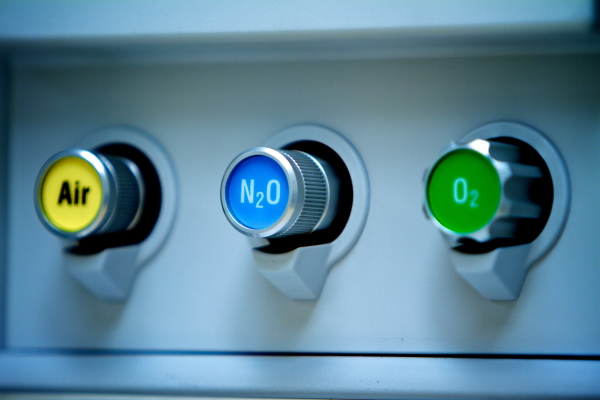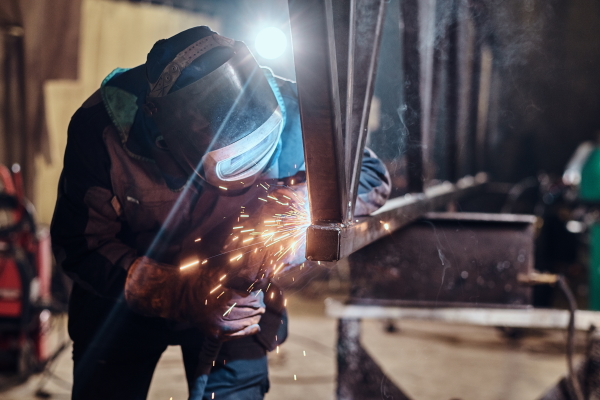Nitrous oxide, also known as laughing gas or N
2O, is a colourless, sweet-smelling gas with various uses and effects.
Facts about nitrous oxide
- Nitrous oxide has the chemical formula N2O.
- It is a non-flammable gas that is denser than air. It is stored in pressurised gas cylinders and becomes liquid at low temperatures and high pressure.
- Nitrous oxide is a potent greenhouse gas and contributes to global warming. It has a significant impact on the depletion of the ozone layer.
- Nitrous oxide is an oxidant and aids combustion. It can intensify the combustion of fuels, increasing performance in certain applications.
- Nitrous oxide is often used as a medical and dental anaesthetic. When inhaled in low concentrations, it has analgesic (pain-relieving) and anxiolytic (anxiety-relieving) effects.

Fig. 1: Use of nitrous oxide as an anaesthetic
Production of laughing gas
Laughing gas was first produced in 1773 by the action of nitrogen monoxide on iron filings. Humphry Davy (1778-1829) investigated the intoxicating effect of the gas in his own experiments and proposed its use as a narcotic in 1799. It was not until 1868 that a mixture of nitrous oxide and oxygen was used in medicine.
Today, technical production works by decomposing ammonium nitrate under heat. This produces ammonia and nitric acid, which further decompose to nitrous oxide and water:
NH
4NO
3 >> NH
3 + HNO
3 >> N
2O + 2 H
2O
Nitrous oxide is also formed during heavy nitrogen fertilisation. It plays an essential role in the natural nitrogen cycle. Nitrous oxide is a greenhouse gas and plays a role in the ozone-depleting processes in the stratosphere.
Applications of nitrous oxide
Medical and dental use
Nitrous oxide is commonly used as a sedative and analgesic during medical and dental procedures. It is administered together with oxygen to induce a state of conscious sedation and pain relief.

Fig. 2: Laughing gas sedation device
Food industry
Nitrous oxide is used as a propellant in aerosol whipped cream and other food products. It gives the product a creamy texture and stability.
Automotive industry
Nitrous oxide is used in car engines as a performance-enhancing additive. It is injected into the intake manifold to provide additional oxygen, resulting in increased power output.
Rocket fuel
Nitrous oxide has been used as an oxidiser in some hybrid rocket engines. When combined with a suitable propellant, such as rubber or paraffin, it can produce thrust.
Welding and metalworking
Nitrous oxide can be used in metalworking as a shielding gas in welding. It helps prevent oxidation and ensures a clean weld.

Fig. 3: Nitrous oxide as a shielding gas for welding
Racing industry
Nitrous oxide is used in racing to increase engine power. It is injected into the engine's intake system to increase the oxygen content, resulting in more power.
Pharmaceutical industry
Nitrous oxide is used in the manufacture of various pharmaceuticals and medicines. It can be a precursor or intermediate in the synthesis of certain compounds.
 www.donauchem.at
Related sources:
www.seilnacht.com
www.donauchem.at
Related sources:
www.seilnacht.com - as of 20.06.2023
www.chemie.de - as of 20.06.2023
www.pharmawiki.ch - as of 21.06.2023